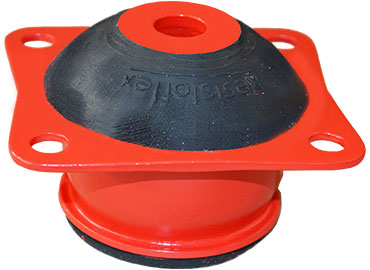Debunking Common Power Flushing Myths
A properly working central heating system is essential to make your home warm and energy-efficient. Sludge, rust, and debris may build up in your radiators and pipes over time, making them less efficient and raising your energy bills. Power Flush Service is an effective way to remove these obstructions and get your heating system back to its best. But a number of myths are associated with power flushing, which makes homeowners skeptical about its effectiveness and requirement.
In this blog, we will debunk some of the most prevalent myths surrounding power flushing and give you the facts.
Myth 1: Power Flushing Damages Your Pipes and Boiler
Truth: Power flushing is a controlled and safe process.
Power flushing is too rough, which damages your heating system, one of the biggest misconceptions. Realistically, the professionals carry special pumps with pressure regulation that will flush the system using cleaning chemicals. Power flushing dislodges the sludge safely without inflicting damage to the boiler, pipes, and radiators. When done rightly, power flushing prolongs the lifespan of your heating system, not harming it.
Myth 2: Power Flushing is Just Required for Old Heating Systems
Truth: Even new systems may be able to gain from power flushing.
Though older systems are more likely to be clogged with sludge, newer systems may also become clogged by poor water quality, corrosion, or incorrect installation. Indeed, some boiler manufacturers suggest a power flush prior to fitting a new boiler to avoid sludge in the old system spreading to the new system. Maintenance, such as power flushing, keeps heating systems, whether new or old, operating efficiently.
Myth 3: Power Flushing is the Same as Chemical Flushing
Truth: Both are distinct ways of cleaning.
Power flushing has been confused by many with chemical flushing. Whereas both are applied to clean up heating systems, power flushing sees high-velocity water flow plus cleaning chemicals removed to break and clear hard deposits. Chemical flushing, however, employs a smaller flow rate and is not typically as good for clearing heavy sludge. For systems that contain heavy blockage, a Power Flush Service will be more recommended.
Myth 4: Power Flushing is Not Needed If Radiators Are Operating
Reality: A system can still contain debris even if radiators appear okay.
Simply because your radiators are warming up doesn't mean they're running at maximum efficiency. With time, even a small sludge buildup can limit water movement, leading to cold spots, patchy heating, and higher bills. A power flush by a professional can get them back up to speed and prevent problems down the line before they turn into expensive repairs.
Myth 5: Power Flushing is Too Expensive and Not Worth It
Truth: It is cost-effective in the long term.
Some residents are apprehensive to spend money on power flushing, believing it's a useless expenditure. But neglecting sludge formation might result in decreased heating performance, increased energy costs, constant repairs, and even boiler failure. Power Flush Service prevents expensive replacements and prolongs the life of your heating system, making it a worthwhile investment.
Myth 6: DIY Power Flushing is as Effective as Professional Service
Reality: Professional power flushing guarantees a complete cleaning.
Although some homeowners try DIY power flushing, it's neither as effective nor safe as seeking a professional. DIY attempts without proper equipment and knowledge might leave some sludge deposits or even harm the system. A certified technician guarantees a full and safe cleaning cycle, enhancing your heating system's efficiency.
Conclusion
Power flushing is an essential maintenance service that keeps your central heating system running smoothly. By debunking these common myths, it’s clear that a professional Power Flush Service is a safe, effective, and cost-efficient way to maintain your home’s heating efficiency.
If you’re experiencing cold radiators, slow heating, or high energy bills, consider scheduling a power flush to restore your system’s performance. Don’t let myths hold you back from enjoying a warm and efficient home!
For more information visit :- https://bookmybuddy.co.uk/services/plumbing-services.php
A properly working central heating system is essential to make your home warm and energy-efficient. Sludge, rust, and debris may build up in your radiators and pipes over time, making them less efficient and raising your energy bills. Power Flush Service is an effective way to remove these obstructions and get your heating system back to its best. But a number of myths are associated with power flushing, which makes homeowners skeptical about its effectiveness and requirement.
In this blog, we will debunk some of the most prevalent myths surrounding power flushing and give you the facts.
Myth 1: Power Flushing Damages Your Pipes and Boiler
Truth: Power flushing is a controlled and safe process.
Power flushing is too rough, which damages your heating system, one of the biggest misconceptions. Realistically, the professionals carry special pumps with pressure regulation that will flush the system using cleaning chemicals. Power flushing dislodges the sludge safely without inflicting damage to the boiler, pipes, and radiators. When done rightly, power flushing prolongs the lifespan of your heating system, not harming it.
Myth 2: Power Flushing is Just Required for Old Heating Systems
Truth: Even new systems may be able to gain from power flushing.
Though older systems are more likely to be clogged with sludge, newer systems may also become clogged by poor water quality, corrosion, or incorrect installation. Indeed, some boiler manufacturers suggest a power flush prior to fitting a new boiler to avoid sludge in the old system spreading to the new system. Maintenance, such as power flushing, keeps heating systems, whether new or old, operating efficiently.
Myth 3: Power Flushing is the Same as Chemical Flushing
Truth: Both are distinct ways of cleaning.
Power flushing has been confused by many with chemical flushing. Whereas both are applied to clean up heating systems, power flushing sees high-velocity water flow plus cleaning chemicals removed to break and clear hard deposits. Chemical flushing, however, employs a smaller flow rate and is not typically as good for clearing heavy sludge. For systems that contain heavy blockage, a Power Flush Service will be more recommended.
Myth 4: Power Flushing is Not Needed If Radiators Are Operating
Reality: A system can still contain debris even if radiators appear okay.
Simply because your radiators are warming up doesn't mean they're running at maximum efficiency. With time, even a small sludge buildup can limit water movement, leading to cold spots, patchy heating, and higher bills. A power flush by a professional can get them back up to speed and prevent problems down the line before they turn into expensive repairs.
Myth 5: Power Flushing is Too Expensive and Not Worth It
Truth: It is cost-effective in the long term.
Some residents are apprehensive to spend money on power flushing, believing it's a useless expenditure. But neglecting sludge formation might result in decreased heating performance, increased energy costs, constant repairs, and even boiler failure. Power Flush Service prevents expensive replacements and prolongs the life of your heating system, making it a worthwhile investment.
Myth 6: DIY Power Flushing is as Effective as Professional Service
Reality: Professional power flushing guarantees a complete cleaning.
Although some homeowners try DIY power flushing, it's neither as effective nor safe as seeking a professional. DIY attempts without proper equipment and knowledge might leave some sludge deposits or even harm the system. A certified technician guarantees a full and safe cleaning cycle, enhancing your heating system's efficiency.
Conclusion
Power flushing is an essential maintenance service that keeps your central heating system running smoothly. By debunking these common myths, it’s clear that a professional Power Flush Service is a safe, effective, and cost-efficient way to maintain your home’s heating efficiency.
If you’re experiencing cold radiators, slow heating, or high energy bills, consider scheduling a power flush to restore your system’s performance. Don’t let myths hold you back from enjoying a warm and efficient home!
For more information visit :- https://bookmybuddy.co.uk/services/plumbing-services.php
Debunking Common Power Flushing Myths
A properly working central heating system is essential to make your home warm and energy-efficient. Sludge, rust, and debris may build up in your radiators and pipes over time, making them less efficient and raising your energy bills. Power Flush Service is an effective way to remove these obstructions and get your heating system back to its best. But a number of myths are associated with power flushing, which makes homeowners skeptical about its effectiveness and requirement.
In this blog, we will debunk some of the most prevalent myths surrounding power flushing and give you the facts.
Myth 1: Power Flushing Damages Your Pipes and Boiler
Truth: Power flushing is a controlled and safe process.
Power flushing is too rough, which damages your heating system, one of the biggest misconceptions. Realistically, the professionals carry special pumps with pressure regulation that will flush the system using cleaning chemicals. Power flushing dislodges the sludge safely without inflicting damage to the boiler, pipes, and radiators. When done rightly, power flushing prolongs the lifespan of your heating system, not harming it.
Myth 2: Power Flushing is Just Required for Old Heating Systems
Truth: Even new systems may be able to gain from power flushing.
Though older systems are more likely to be clogged with sludge, newer systems may also become clogged by poor water quality, corrosion, or incorrect installation. Indeed, some boiler manufacturers suggest a power flush prior to fitting a new boiler to avoid sludge in the old system spreading to the new system. Maintenance, such as power flushing, keeps heating systems, whether new or old, operating efficiently.
Myth 3: Power Flushing is the Same as Chemical Flushing
Truth: Both are distinct ways of cleaning.
Power flushing has been confused by many with chemical flushing. Whereas both are applied to clean up heating systems, power flushing sees high-velocity water flow plus cleaning chemicals removed to break and clear hard deposits. Chemical flushing, however, employs a smaller flow rate and is not typically as good for clearing heavy sludge. For systems that contain heavy blockage, a Power Flush Service will be more recommended.
Myth 4: Power Flushing is Not Needed If Radiators Are Operating
Reality: A system can still contain debris even if radiators appear okay.
Simply because your radiators are warming up doesn't mean they're running at maximum efficiency. With time, even a small sludge buildup can limit water movement, leading to cold spots, patchy heating, and higher bills. A power flush by a professional can get them back up to speed and prevent problems down the line before they turn into expensive repairs.
Myth 5: Power Flushing is Too Expensive and Not Worth It
Truth: It is cost-effective in the long term.
Some residents are apprehensive to spend money on power flushing, believing it's a useless expenditure. But neglecting sludge formation might result in decreased heating performance, increased energy costs, constant repairs, and even boiler failure. Power Flush Service prevents expensive replacements and prolongs the life of your heating system, making it a worthwhile investment.
Myth 6: DIY Power Flushing is as Effective as Professional Service
Reality: Professional power flushing guarantees a complete cleaning.
Although some homeowners try DIY power flushing, it's neither as effective nor safe as seeking a professional. DIY attempts without proper equipment and knowledge might leave some sludge deposits or even harm the system. A certified technician guarantees a full and safe cleaning cycle, enhancing your heating system's efficiency.
Conclusion
Power flushing is an essential maintenance service that keeps your central heating system running smoothly. By debunking these common myths, it’s clear that a professional Power Flush Service is a safe, effective, and cost-efficient way to maintain your home’s heating efficiency.
If you’re experiencing cold radiators, slow heating, or high energy bills, consider scheduling a power flush to restore your system’s performance. Don’t let myths hold you back from enjoying a warm and efficient home!
For more information visit :- https://bookmybuddy.co.uk/services/plumbing-services.php
0 Comments
0 Shares
187 Views
0 Reviews











